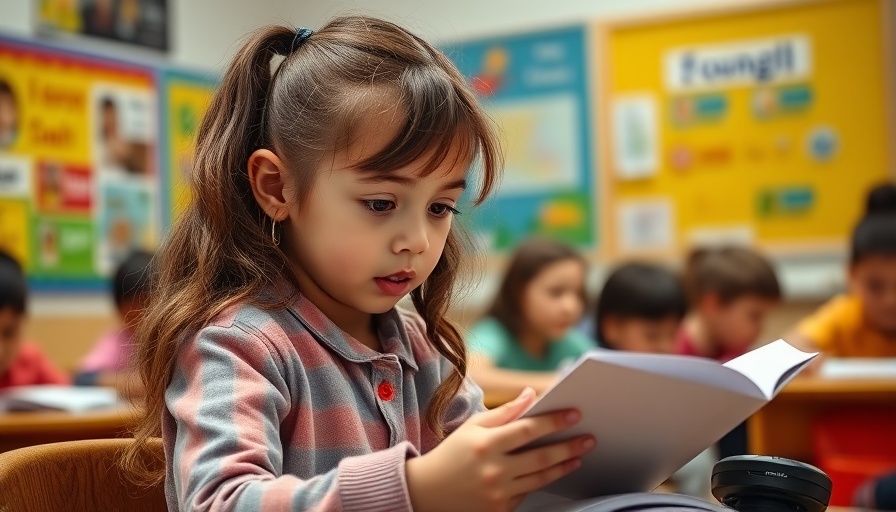
Connecting Reading and Writing: A Symbiotic Approach
In today's educational environment, enhancing students' reading and writing skills is more crucial than ever. The notion that reading and writing are intertwined is not new; however, structuring lessons with this relationship in mind can significantly elevate student outcomes. Educators are encouraged to adopt a holistic approach that integrates these two vital skills, ensuring that students do not merely engage in reading in isolation but rather develop a comprehensive understanding that facilitates better writing. By doing so, students can master the nuances of language, style, and structure that characterize effective writing.
In 'How to Structure Lessons to Build Reading and Writing Skills', the discussion dives into innovative teaching methods that integrate reading and writing, highlighting key insights that sparked deeper analysis on our end.
Understanding Text Structures: The Building Blocks of Literacy
One effective way to bridge reading and writing is through the use of graphic organizers that elucidate text structures. Whether it's narrative tales or informational texts, recognizing how these structures function enables students to visualize and internalize their components. For instance, employing visual tools allows even young learners to assemble the core elements of a narrative or dissect the layers of a compare-and-contrast text. When students create these organizers, they actively participate in their learning process, fostering a deeper understanding that can be leveraged both in reading comprehension and in crafting their own texts.
The Role of Writing About Reading in Skill Development
Writing about reading is another indispensable technique that enhances reading comprehension. By engaging in summary writing or response essays, students reinforce their understanding of the texts they engage with. This exercise not only helps students process the material but also teaches them how to articulate their thoughts clearly and coherently. As educators, it is vital to prompt students to analyze the rhetorical devices authors use and to mirror those choices in their writing. This reflective practice cultivates critical thinking and analytical skills that are beneficial across the curriculum.
New Strategies for Engaging Young Learners
As children are often visual and tactile learners, incorporating hands-on activities that unify reading and writing can result in greater engagement. For instance, educators can introduce storytelling circles where students narrate their stories based on graphic organizers they’ve created, thus reinforcing both the reading and writing process. Such collaborative and interactive learning environments promote not only literacy but also social skills, enabling students to learn from and teach each other.
Challenges and Considerations for Educators
Despite recognizing the importance of integrating reading and writing, educators may encounter challenges such as curriculum constraints or a lack of resources. However, navigating these hurdles is essential. Teachers can start with small, manageable changes in lesson planning to see significant impacts over time. By fostering a culture of inquiry and exploration within their classrooms, educators can empower students to become confident readers and writers who are adept at tackling varied texts. Moreover, continuing professional development in literacy education can further equip teachers with the necessary strategies to support their students effectively.
Looking Ahead: Future Opportunities in Literacy Education
The future of literacy education lies in further integrating technology and differentiated instruction. As educational resources continue to evolve, incorporating digital tools that promote interactive and personalized learning experiences will play a pivotal role. For instance, platforms that allow students to engage with texts dynamically not only enhance their comprehension but also provide avenues for creative expression in writing. This fusion of technology and literacy will be essential in preparing students for a rapidly changing world where effective communication is paramount.
In conclusion, the strategies discussed resonate with the crucial understanding of how to structure lessons to build reading and writing skills effectively. By intentionally linking these two areas, educators can foster a classroom environment that nurtures competent, confident learners. As stakeholders in education, from teachers to parents, there is a shared responsibility to provide cohesive experiences that emphasize the interdependent nature of reading and writing. Therefore, educators are encouraged to innovate and adapt their teaching methods, ensuring students not only appreciate literature but also become skilled communicators in their writing endeavors.
 Add Row
Add Row  Add
Add 




 Add Row
Add Row  Add
Add 

Write A Comment